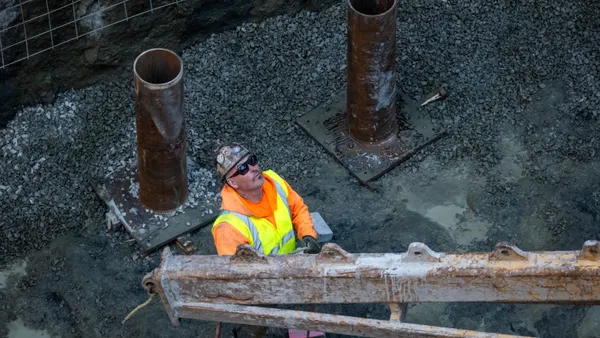Dive Brief:
-
In the U.S., more affordable housing can be found in low-opportunity areas than in high-opportunity areas, according to a new report from RentCafé, which rated such inventory in major cities relative to local factors like employment conditions, household income, crime and accessibility.
-
Nationwide, 40% of fully affordable housing stock is in average or above-average neighborhoods in terms of resources there. The report considers affordable housing to be projects that have a government subsidy or favorable financing as well as an income threshold.
- Seattle, Washington, DC, Boston, Houston, San Francisco, San Diego and Riverside, CA, have more than half of their fully-affordable properties in average or above-average neighborhoods. Tampa, Chicago, Miami, New York, Phoenix, Detroit and St. Louis have 30% or fewer fully affordable properties in that neighborhood tier.
Dive Insight:
Growth in multifamily construction, particularly rental apartments, is tapering after a few strong years of activity following the recession. Nearing overbuilding in many markets, the category is expected to reach a cycle-high in 2017, and lenders are already pulling back from big projects, suggesting that the rapid development in cities like New York and Chicago could slow.
Most of the growth has been concentrated at the upper end of the market, however, leaving the low- and middle-income tiers with less inventory than there is demand for. Municipalities are considering upzoning as one solution to create mixed-income projects that combine margin-friendly, high-end multifamily housing with affordable units as well as retail and office space, parking and access to transit.
Los Angeles voters recently turned down a measure that would have put a two-year ban on the zoning changes typically required to accommodate such projects. In San Francisco, a proposal that would give developers a raised height allowance in exchange for more affordable housing units is being revised. And in DC, the Zoning Commission last year approved increasing the income threshold for affordable units added via the city's inclusionary zoning program from 50% to 60% of the area median income.
A report last fall from consulting firm McKinsey shared ways that cities can add more housing that residents can afford. The group’s suggestions included: incentives for local governments, modular construction and faster land-approval processes. Inclusionary zoning laws, too, are being put on the books, often in exchange for density bonuses.
Requirements to include more affordable housing in major developments also has the effect of locating low- and middle-income properties closer to critical resources — something the RentCafé report found that cities experiencing critical affordable housing shortages such as Seattle, Washington, DC, and San Francisco, are doing.
For more housing news, sign up for our daily residential construction newsletter.













